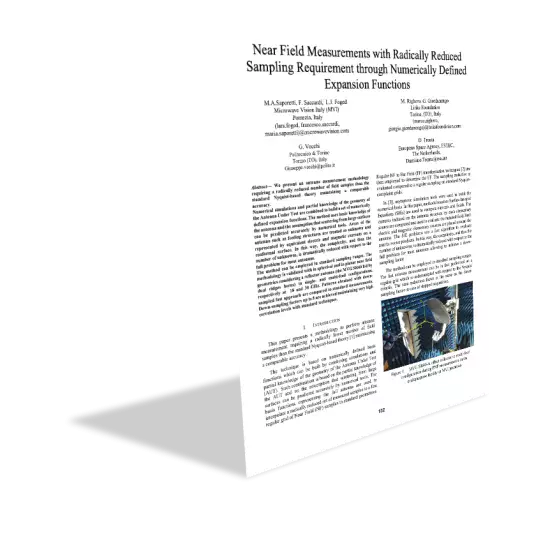
We present an antenna measurement methodology requiring a radically reduced number of field samples than the standard Nyquist-based theory maintaining a comparable accuracy.
Numerical simulations and partial knowledge of the geometry of the Antenna Under Test are combined to build a set of numerically defined expansion functions. The method uses basic knowledge of the antenna and the assumption that scattering from large surfaces can be predicted accurately by numerical tools. Areas of the antenna such as feeding structures are treated as unknown and represented by equivalent electric and magnetic currents on a conformal surface. In this way, the complexity, and thus the number of unknowns, is dramatically reduced with respect to the full problem for most antennas.
The method can be employed in standard sampling ranges. The methodology is validated with in spherical and in planar near field geometries considering a reflector antenna (the MVG SR40 fed by dual ridges horns) in single- and multi-feed configurations, respectively at 18 and 30 GHz. Patterns obtained with down- sampled fast approach are compared to standard measurements. Down-sampling factors up to 8 are achieved maintaining very high correlation levels with standard techniques.

